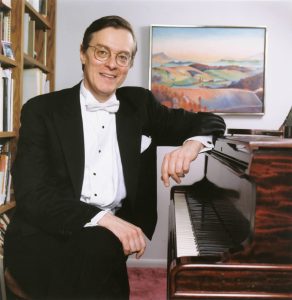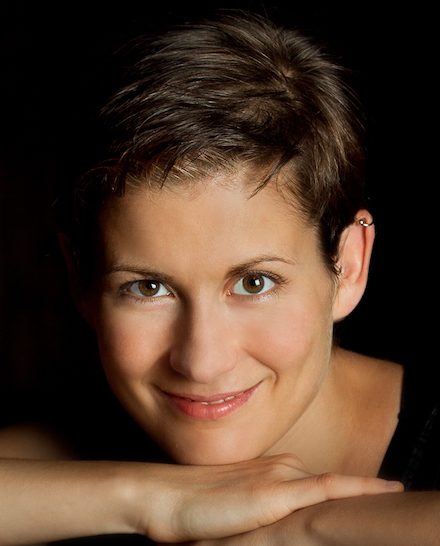The Orchestra Now
Leon Botstein, conductor
Peter Serkin, Anna Polonsky, soloists
Carnegie Hall, Stern Auditorium
May 3, 2018
Review by Seth Rogovoy
(NEW YORK, N.Y., May 4, 2018) – The Orchestra Now (TON), an orchestra of young professionals based at Bard College, presented an adventurous and challenging program of 20th-century music at Carnegie Hall on Thursday night under the baton of Leon Botstein, performing works by Bela Bartok, Laszlo Lajtha, and Ahmed Adnan Saygun. The young instrumentalists did almost all of the heavy lifting themselves, aided and abetted only by Anna Polonsky and the masterful Peter Serkin on pianos for Bartok’s Concerto for Two Pianos, Percussion, and Orchestra.
Although his piece came last on the program and was the earliest composition of the three, Bartok set the tone, so to speak, as the reigning aesthetic presence of the evening, his influence felt in the work of his fellow Hungarian Lajtha and that of the Turkish Saygun. As in most works by Bartok, the Lajtha and Saygun began from a foundation in the western classical idiom while incorporating melodic, rhythmic, and tonal influences from local and regional folk music, jazz, nature, and other sounds (up to the listener to judge) transformed into music.
The evening also took on a heavily political cast, partly embedded in the music itself – the Lajtha, for example, was written in the wake of the failed 1956 Hungarian uprising, and indeed is titled “Revolution” – and was also contextualized as such (perhaps beyond what was necessary) by the three introductory lectures by musicians that preceded each piece – an innovation of TON that might benefit from some tweaking (shortening or editing the remarks, for one, and pre-vetting them for a diversity of themes, as they were somewhat repetitive) down the road.
The music didn’t require as much, either, as the human struggle and ferment was readily apparent in all three numbers. Saygun’s Symphony No. 4, Op. 53 (1974) was a dynamic burst of energy made all the more so by Saygun’s precise use of silences in pauses and rests. With a melodic scale based on part on the Turkish maqam, a mode in which notes fall in combinations that a Western listener may not expect, Saygun employs tonalities of instruments in surprising and different fashion, as well as favoring repeated notes (the influence of Minimalism?), all of which the musicians performed as expected, under the brilliant direction of Botstein.
Even more stunning was the way in which Saygun’s arranging for orchestra wound up as if the composer himself was playing an instrument – the piece boasted a spatial dimensionality far beyond the usual, with the music traveling through and across and around the stage, skipping around and going front to back with a collective, machine-like precision. This was almost heavy-metal classical, not avant-gardist in any sense, but in sum effect. It also would have made a great movie soundtrack.
Lajtha’s Symphony No. 7, Op. 63 (“Revolution”) (1957) was more abstract, the music reflecting both the hope and disappointment of the student uprising against the Soviet-imposed dictatorship of the Hungarian People’s Republic, a three-week burst of organic people power that was ultimately crushed by Soviet tanks and troops. The dissonance of the music reflected the cognitive dissonance of the history, although at times one wondered how much of the dissonance was on the page and how much was unintended – this was an extremely difficult and ambitious work to tackle. In the end, however, the tolling of bells spoke volumes about the struggle and sacrifice of the Hungarian human spirit in the face of monstrous power.
Bartok’s Concerto for Two Pianos, Percussion, and Orchestra brought down the curtain on the rich, colorful evening of music. One of the composer’s greatest achievements, the sonata highlights the affinity between piano and percussion, or piano aspercussion, as well as percussion as piano (or melody instrument). The piece opened with dual pianos, Serkin and Polonsky, playing softly and slowly above a subtle undertow of percussive sound, before a blast of horns sent the work into motion.
It must be a bear to play, as sometimes the first piano part seems totally unmoored from the rhythms of the drums and orchestra, but Serkin was all over it, leaning into the jagged lines and hanging onto the double-note figures – more Cecil Taylor than Franz Lizst – seemingly oblivious to the whirlwind of sound going on around him, while Botstein kept the whole thing from falling apart, steering the orchestra forward and together through the stormy, tempestuous sea of emotion.


